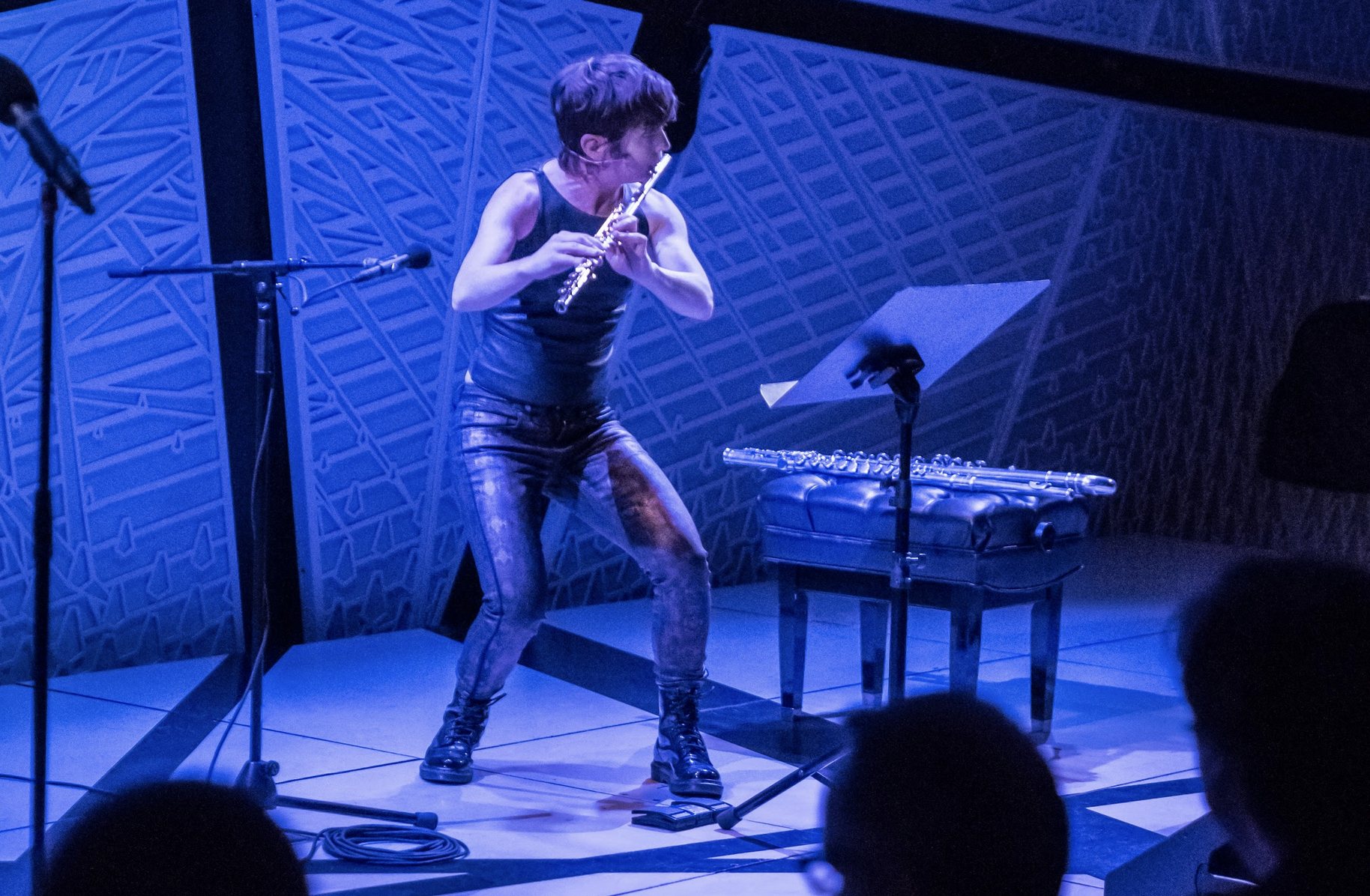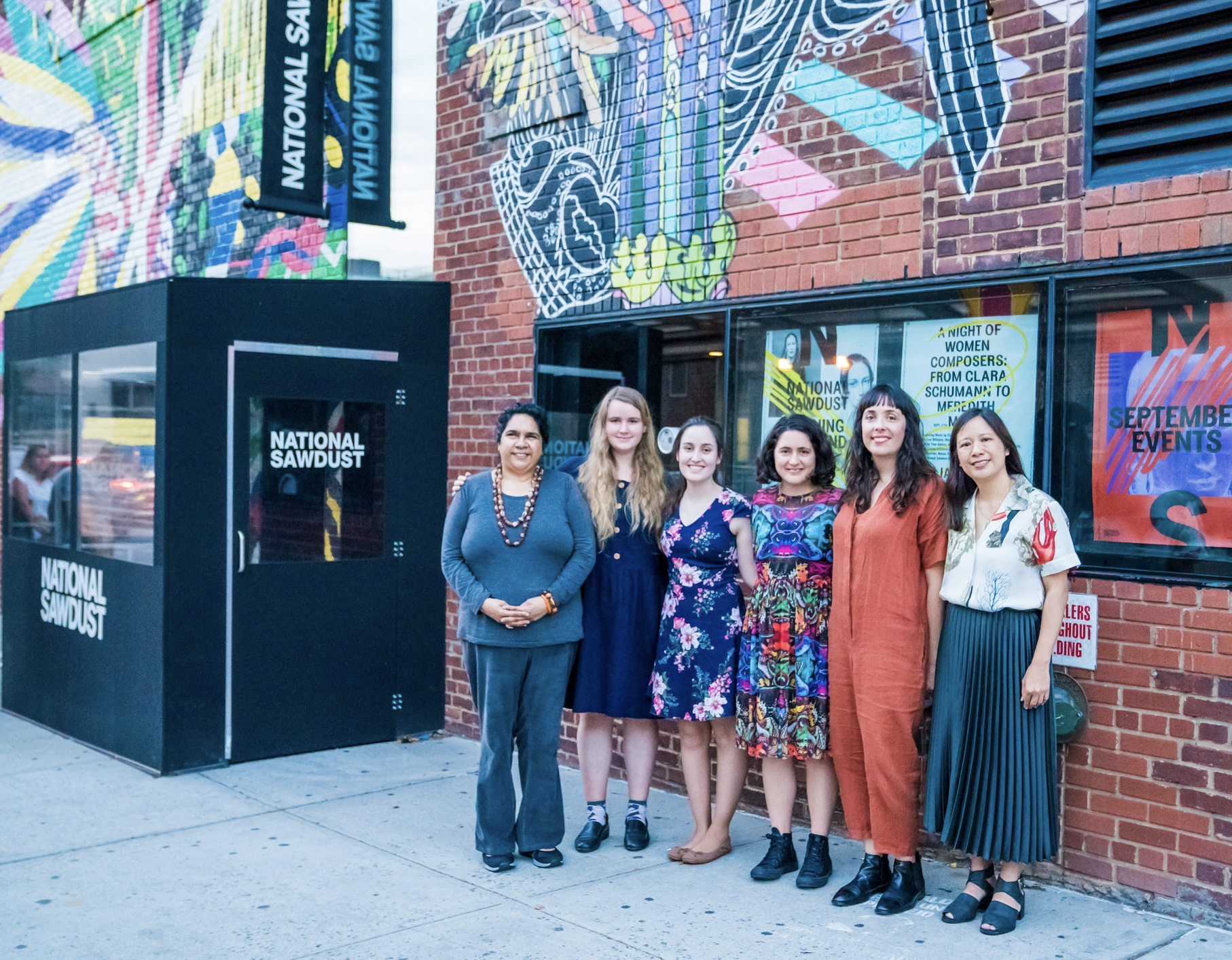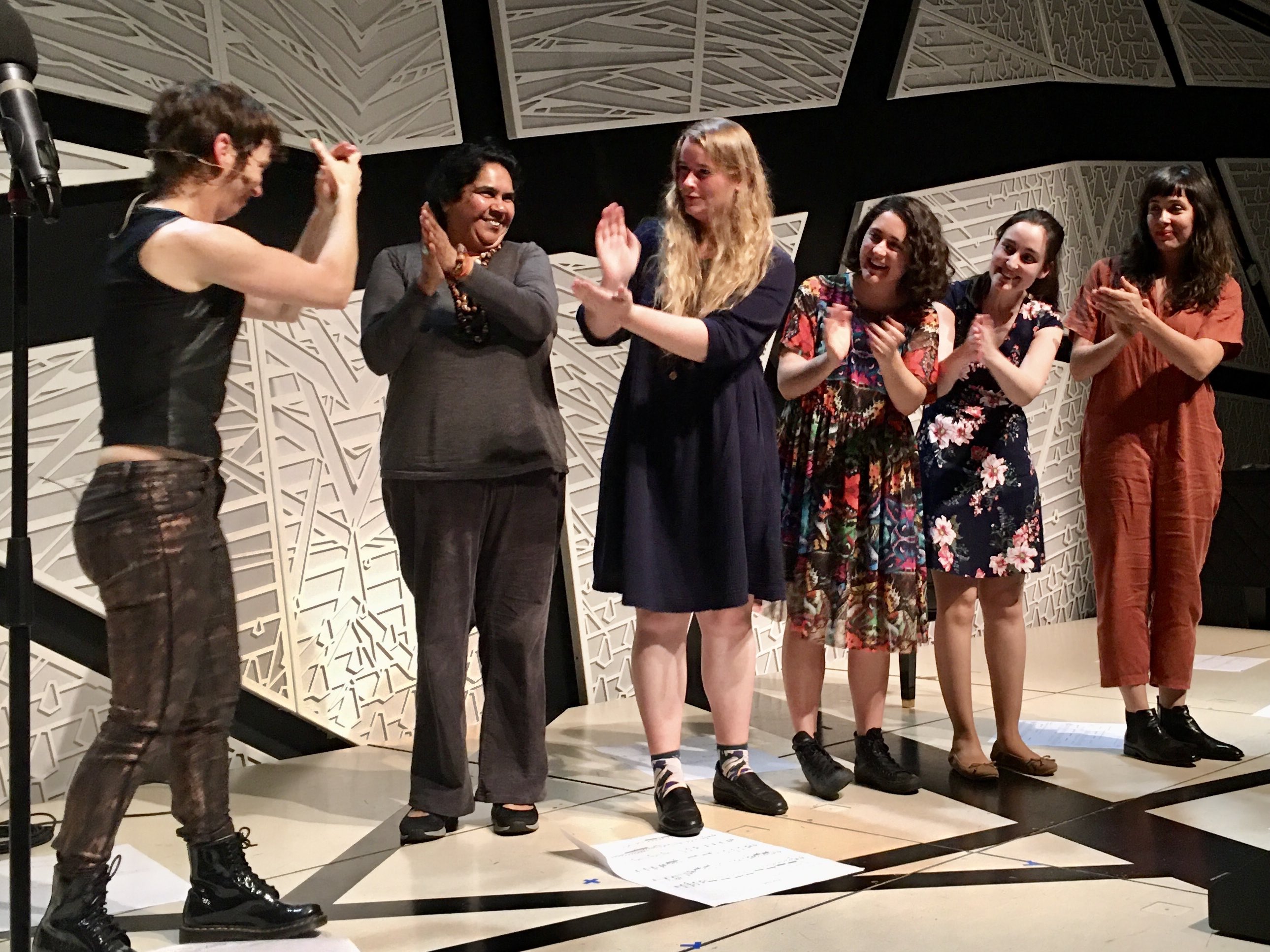Anyone who thinks flute music is merely a pastoral affair limited to avian twitterings and musical sweet nothings should sign up for the next Claire Chase concert. Over the past decade, the two-time MacArthur Fellow and Avery Fisher Prize-winner has stretched the boundaries of what the instrument is capable of, while advocating for the flute as soloist, collaborative artist and curator. Along the way she has presented the world premieres of literally hundreds of new works across the globe. In 2013 she launched Density 2036, a 23-year commissioning project aimed at creating an entirely new body of repertory for flute between 2014 and 2036, the centenary of Edgard Varèse’s mould-breaking 1936 flute solo, Density 21.5.
 Claire Chase at National Sawdust. Photo © Jill Steinberg
Claire Chase at National Sawdust. Photo © Jill Steinberg
In May 2018, thanks to the farsighted Liza Lim who heads up Sydney Conservatorium of Music’s Composing Women program, Chase visited Australia where five composers – Georgia Scott, Peggy Polias, Brenda Gifford, Josephine Macken and Bree van Reyk – had the opportunity to work with her first-hand. Regular email and Skype sessions over the subsequent 15 months brought a series of bold new works into being, each being given as part of an inspirational event at National Sawdust, New York’s trailblazing Brooklyn-based new music hub. All five composers were flown over giving them a unique opportunity to see the pieces on their feet while hanging out for a few days in the Big Apple to check out the vibrant contemporary music scene.
National Sawdust has just celebrated the installation of the Constellation system, Meyer Sound’s revolutionary active room acoustics (the same system that Monash University uses to extend and modify the reverb in its new Alexander Theatre). It was early days for the five Australian composers, and the concert used just a fraction of the system’s capabilities to gently enhance the resonant quality of the space, but touching base afterwards it was easy to tell they were excited by the potential of Constellation and its sister system Spacemap, an innovative platform which allows sound engineers to place and pan sounds all around a space during live performance.
The Composing Women Project kicked off with a welcome to country from Lim who acknowledged Brooklyn’s Lenape and Canarsee first peoples, a poignant reminder of home and – a credit to her – the first time in two years I’ve heard anyone mention New York’s original inhabitants. Georgia Scott’s My3LiNAti0Ns for solo flute started proceedings, a work that takes its cue from stutter-afflicted speech patterns, and one that provided Chase with a showcase for her uniquely physical performance style. A mix of dynamic airy sallies and impassioned vocalisations – both into and out of the instrument – Chase ducked and dived, her flute a willing extension of her sinuous writhing body. Extraordinary gasps and growls merged with sputtering half tones in an economical, finely crafted piece of performance art.
 The Composing Women Program outside National Sawdust. Photo © Jill Steinberg
The Composing Women Program outside National Sawdust. Photo © Jill Steinberg
Two works combined the instrument with either electronics or backing track. Josephine Macken’s Still introduced a multi-textured electronic wash, the extended flute lines wandering in and out of the faintly metallic sound world, the two voices sometimes reinforcing, sometimes obscuring each other. Chase’s musical sounds were split between the instrument and her own voice – at times both simultaneously as she vocalised into the flute – all the while carefully controlling the progress of the electronics by subtle use of a foot pedal.
Peggy Polias’s Secret for concert flute, alto flute and electronics with gate effect was a different kettle of fish, sculpting a rich and strange landscape by superimposing live flute over a soundtrack built up from samples of 15-year-old songs that the composer thought were worth revisiting in a new format. Alternating between instruments, Chase contrasted a melange of soft popping noises and windy columns of sound on the standard concert instrument with more passionate melodies on its deeper, more mellow cousin. The manipulated backing track, comprising snippets of voice, guitar and piano, added a weird beauty to it all culminating in a wild trilling sequence and a visceral series of pants, hisses and labial explosions.
By contrast, Brenda Gifford’s Mungala (Clouds) – a work specially commissioned by Chase – takes a more conventional approach with the flute accompanied by traditional Aboriginal clap sticks (here played by composer Bree van Reyk). Taking the meteorological phenomenon as an extension of Gifford understanding of “country”, the work is written for alto flute with long-breathed melodic lines that curl and flutter in elaborate arabesques. Chase soared high and low, her descents often punctuated by a clatter of percussion, before a dance-like finale ended the work with a wild flourish.
 Claire Chase with the Composing Women Program
Claire Chase with the Composing Women Program
Last but not least, Bree van Reyk pushed the performing envelope on step further with her ingenious A (Real and Imagined) Map of Claire Chase. Taking as its starting point Chase’s own life experience and especially her early memories of sound, the work was written in fragmentary form, some sections placed lying on the floor, others handed out to audience members to hold up if and when Chase approached them. By allowing different sections to be played as the mood takes the soloist – a reflection of Chase’s embrace of irregular daily practise routines – van Reyk ensures that no two performances will ever be the same. Written for the sonorous bass flute, the work involved blowing into the instrument not only with the lips but also with the mouth an inch or so distant from the mouthpiece, even calling for passages of whistling at times. Chase ran the gamut from funky to cool, at one point crouching face to face with a man in the audience as she negotiated a complex, crazily energetic passage.
With such a wide-ranging array of performance techniques and compositional discipline on show, the above descriptions barely do justice to an uplifting evening of new music making. Chase and Lim are to be applauded for the venture, and as far as Scott, Polias, Gifford, Macken and van Reyk are concerned: move over AOC, there’s a new “squad” in town.













Comments
Log in to join the conversation.